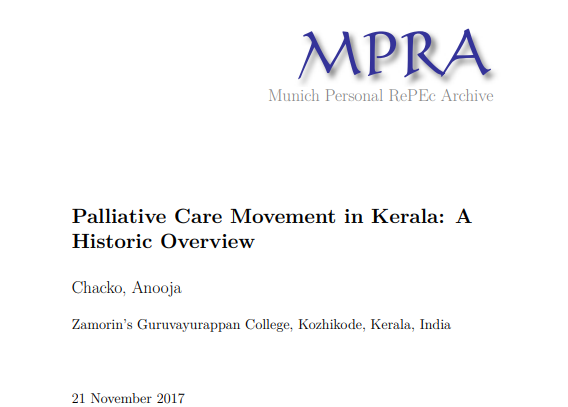A Comparative Study to Assess the Awareness of Palliative Care Between Urban and Rural Areas of Ernakulum District, Kerala, India
The study findings revealed a significant disparity in awareness levels between urban and rural participants. While 13.4% of the total respondents had heard about palliative care, awareness was considerably higher in urban areas (20.5%) compared to rural areas (5.4%). This difference was statistically significant, highlighting a pronounced urban-rural divide. Most urban participants learned about palliative care through newspapers (55.3%) and television (36.8%), whereas rural participants relied more on health workers (33.3%). Despite the literacy rate being high in the study area, overall knowledge about palliative care remained poor, underscoring the need for targeted awareness initiatives.
Participants demonstrated a general understanding of palliative care's benefits, with 85.1% acknowledging its role in improving the quality of life. The study also explored perceptions regarding the best setting for palliative care delivery, revealing a preference for home-based care among both urban (52.6%) and rural (44.4%) respondents. This preference aligns with the broader objective of integrating palliative care into community settings to ensure accessibility and comfort for patients and their families.
A noteworthy aspect of the study was the cultural difference in attitudes toward sharing critical information with patients. Urban participants predominantly felt that patients should be informed first about their condition, whereas rural participants favored informing the family first. This variation reflects the cultural and familial dynamics that influence decision-making processes in healthcare.
The research further highlighted the need for capacity building among healthcare providers and community workers. Training programs focused on communication skills, home-based care delivery, and breaking bad news compassionately are essential to meet the evolving needs of patients. Additionally, popular media such as newspapers and television should be leveraged for large-scale awareness campaigns to bridge the knowledge gap.
In the context of Kerala, the study emphasized regional variations in the palliative care movement. While Ernakulam predominantly offers hospital-based services, the districts of Kozhikode and Malappuram have pioneered robust community-based palliative care models that emphasize house calls. These models serve as benchmarks for developing accessible and patient-centric palliative care systems in other regions.
In conclusion, this study underscores the urgent need for tailored palliative care services that address the unique cultural, geographic, and socioeconomic factors influencing healthcare access and delivery. By fostering community involvement, enhancing training programs, and implementing widespread awareness campaigns, palliative care can become an integral part of the healthcare system, ensuring dignity and quality of life for patients and their families.




Comments
Post a Comment